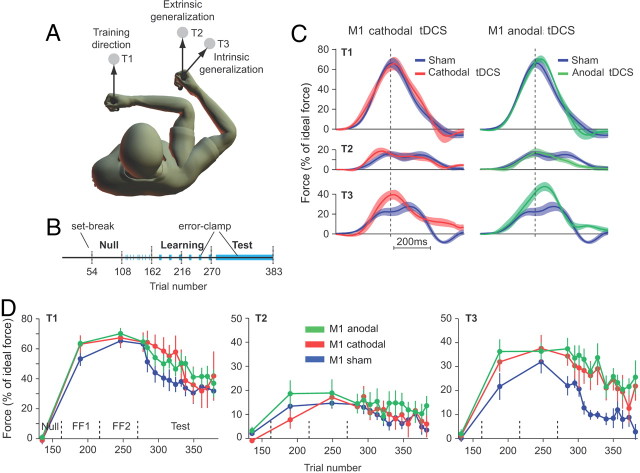Figure 1.
Learning and generalization of reaching in a force-field task. A, Subjects were trained to reach under force-field perturbation to T1. Generalization in intrinsic and extrinsic coordinates was tested with reaching movements to test T2 and T3. T2 required identical hand and cursor motion (as compared with T1) whereas T3 required identical joint motion (as compared with T1). B, The experiment started with 162 trials in a null field followed by 108 trials under force-field perturbation. During the field trials, the learning and generalization were assessed every 15 trials with one error-clamp trial to each of the three targets (blue zones). In an error-clamp trial, the robot produces a stiff channel from start position to the target, minimizing movement errors and allowing us to measure the forces that subjects produce against channel walls. These forces are a proxy for the perturbation that the brain expects on that trial. The test block started with five reaching movements under force-field perturbation to T1 followed by 108 error-clamp trials to T1, T2, or T3 in random order (blue zone). Note that, after the baseline blocks, all movements to T2 and T3 are in error-clamp trials. C, Normalized force profiles recorded during the first three error-clamp trials to each of the three targets during the test block. Force profiles were aligned on peak tangential velocity and normalized with ideal force at peak tangential velocity. Data are across subject mean and SEM. D, Evolution of the normalized force at peak tangential velocity over the course of error-clamp trials. Force data were averaged over three error-clamp trials (bin size) and are presented for each target separately. Error bars are SEM.

